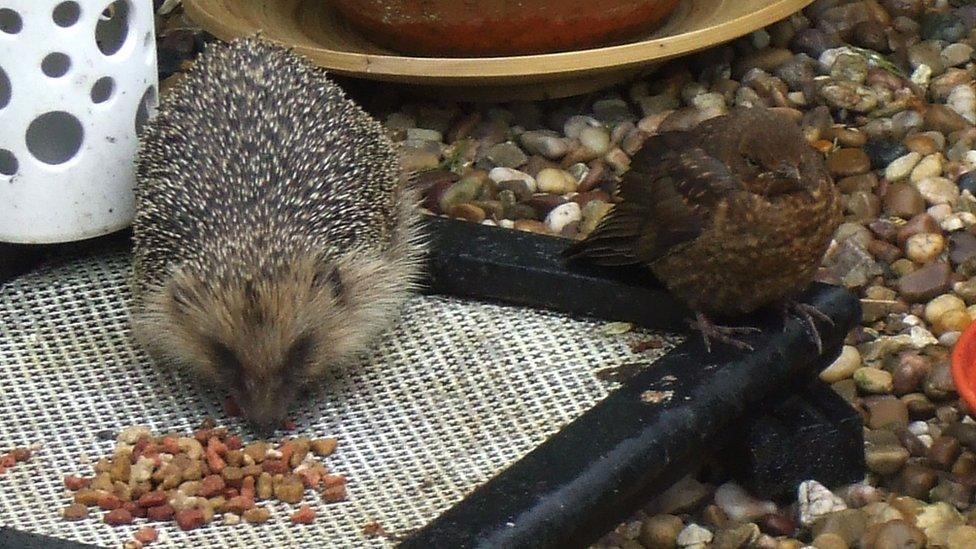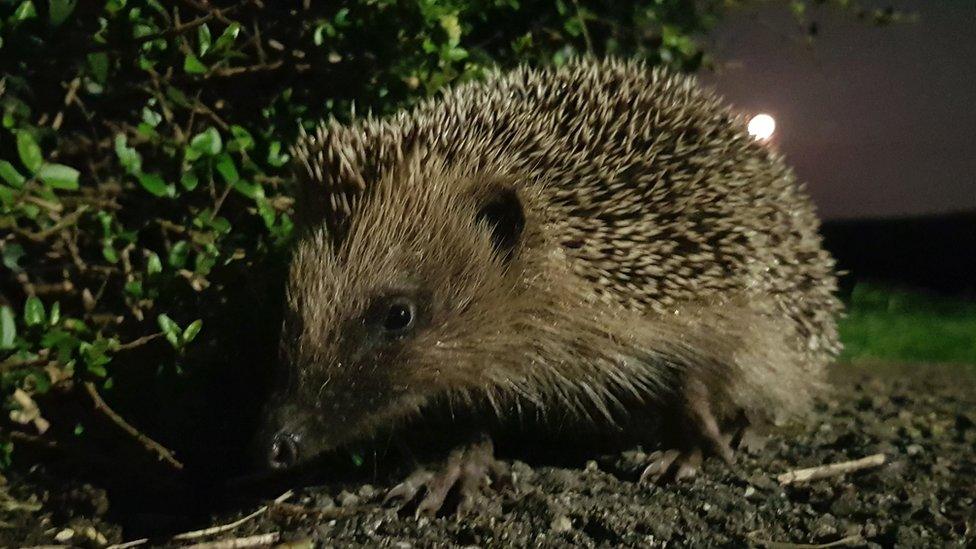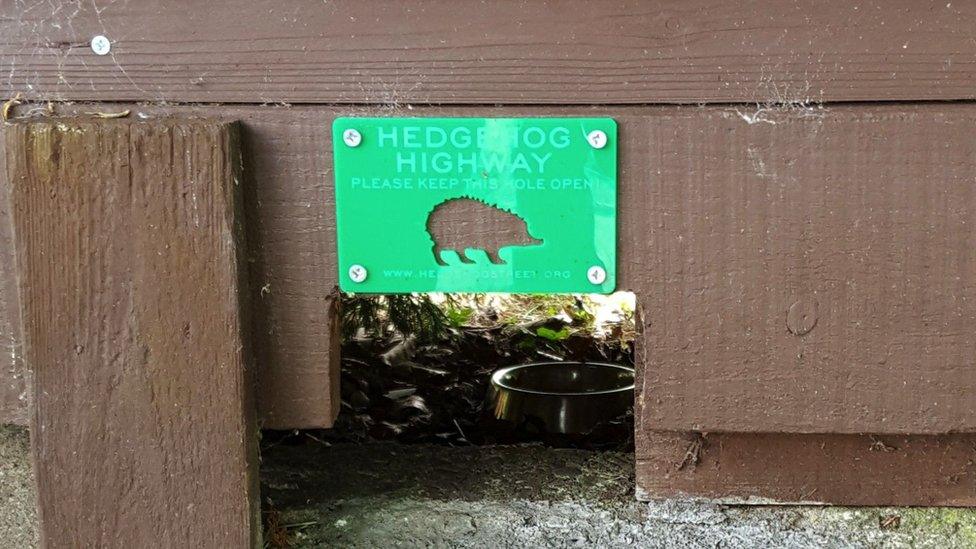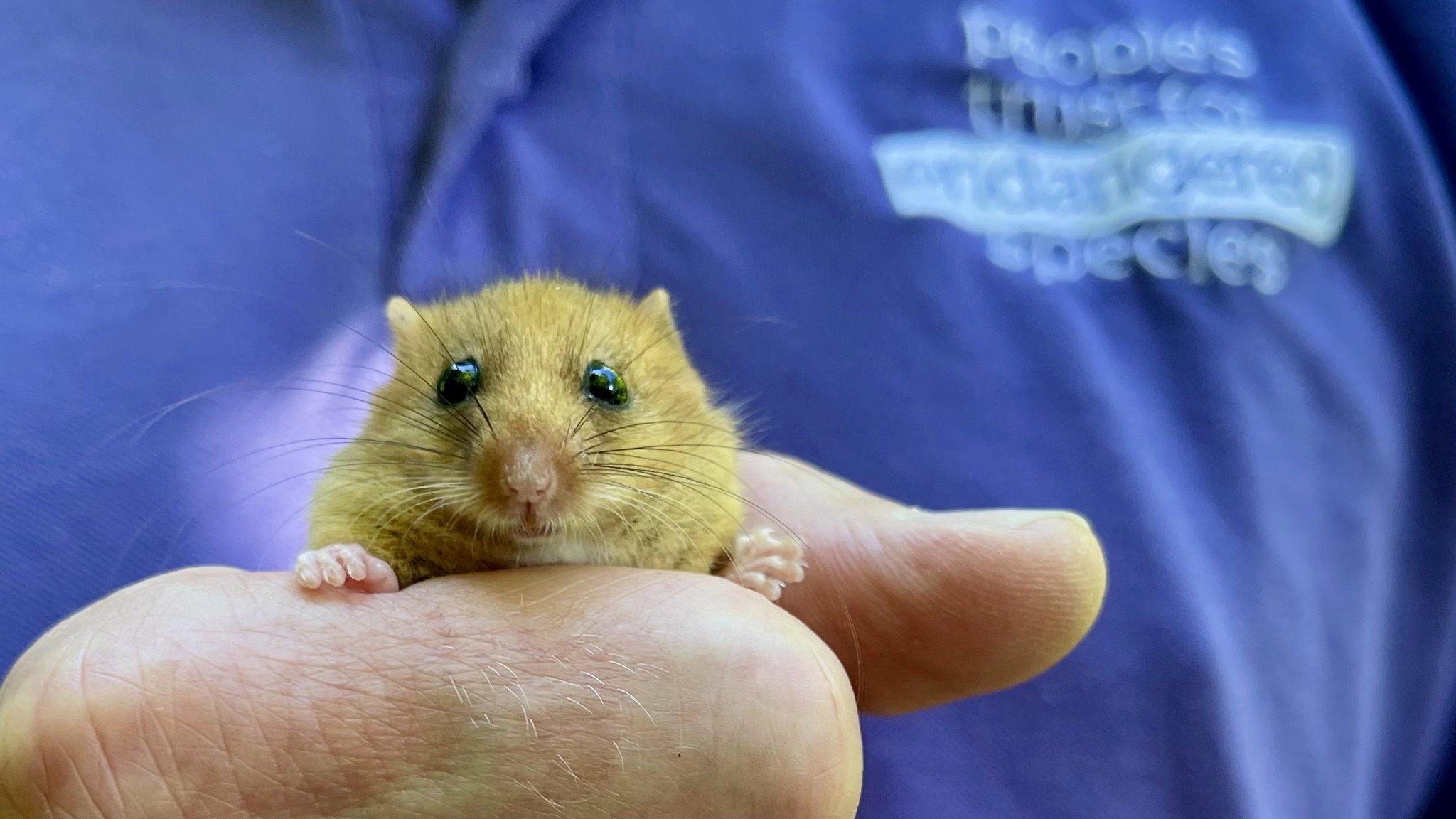Hedgehog population plummets in UK countryside, research suggests
- Published

Putting out food and creating shelter can make gardens "havens" for hedgehogs
The population of hedgehogs in rural Britain is continuing a "steep decline" according to research.
The State of Britain's Hedgehogs report found numbers are down in rural areas by between 30% and 75% since 2000.
It is a "stark contrast" in towns and cities though, where the data showed that hedgehog populations may be starting to recover.
The familiar, prickly mammals need hedgerows and field margins; loss of those could be driving the decline.
The report, by wildlife charities the People's Trust for Endangered Species (PTES) and The British Hedgehog Preservation Society (BHPS), used data gathered between 1981 and 2020 from five ongoing surveys. This showed that hedgehogs have undergone a long historic decline, but that there are now "vast differences" between urban and rural populations.

Hedgehogs can travel about one mile (1.6km) every night through gardens in search of food and mates
Fay Vass, chief executive of BHPS, said that urgent action was needed to understand why rural areas no longer provide suitable hedgehog habitat.
"They have lived here for at least half a million years," she said. "So we need to understand how conservationists, farmers and land managers can work together to prevent hedgehogs from becoming extinct in the countryside."
The charities say that the picture in cities, towns and villages is, perhaps surprisingly, much more positive.

Hedgehogs can use "highways" in urban garden fences
While road mortality is highest around urban areas, well managed, wildlife-friendly gardens and parks can provide refuges for the animals.

How to make your garden hedgehog-friendly
Make sure your garden is connected - with gaps in any fences - so hedgehogs can move between green spaces
Leave a corner of your garden "wild"
Check hedges and undergrowth before strimming or clipping
Make a home for hedgehogs to hibernate
Source: BHPS, external

Grace Johnson runs an urban conservation campaign called Hedgehog Street, an effort to help people make sure their gardens provide a connected network of habitat in urban spaces. She said that the familiar mammals can travel about one mile (1.6km) every night through gardens and parks in search of food and mates.
"Gardens can be havens for hedgehogs, but only if they are connected via gaps in or under garden boundaries to let hedgehogs in and out.
"A 'hedgehog highway' (a 13cm/5in or CD-case-sized square gap) will enable hedgehogs to roam between neighbouring gardens and green spaces, which is vital to their survival."
Related topics
- Published13 September 2021

- Published10 October 2021

- Published17 June 2021
